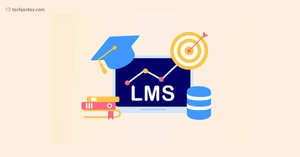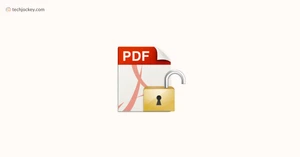What Is Learning Management Software?
Learning management system is a computer program that helps instructors in creating and delivering several types of coursework like lectures, learning materials, multimedia files, assignments, and more. It also assists in assessing the engagement and performance of students through discussion forums, video conferencing, and more.
With the help of LMS software, educational institutes and corporates can manage different elements of learning apart from content. It helps manage calendars, user registration, certifications, user access and notifications.
What Is Online Learning Management System?
Online learning management software is the primary foundation of digital education. LMS platform is essential for the creation, distribution and effective management of courses and educational materials. This software helps instructors provide live classes, create their course content, check assignments and track students’ performance. Learning management software is a great tool for offering world-class education to a large number of students, irrespective of their location.
Who Uses Learning Management Software?
Learning management software is used by a wide variety of organizations and individuals that includes:
- Education sector: Colleges, schools, universities and institutes use a learning management platform to deliver online classes, provide academic materials, track students' progress and more.
- Corporate sector: In corporate organizations, it is used for providing compliance, process and other business-critical training programs to employees.
- NGOs and non-profit sector: NGOs and NPO organizations use a learning management system for the learning and growth of their workforce and volunteers.
- Government departments: LMS software is used by various government agencies to provide regulatory and compliance training to their employees.
How Does Learning Management Software Work?
First, you must create highly engaging e-learning content, which can be done in three ways. You can make the whole content from the very beginning by creating a learning plan, collating information and writing everything on your own, or you have the option to source the material from a vendor. The last option is to use online websites and sources like Wikipedia to add existing information to your LMS database.
Then you need to organize the course in a way that it clearly expresses the purpose of the training program. You have the freedom to structure the content as per your requirement.
In the final step, LMS platform allows you to create, deliver and manage e-learning courses and track the learning curve of your students. Most new-age LMS systems come with advanced-level artificial intelligence technology that analyzes a student's previous learning content and recommends new or related learning material. You can also use AI-based learning to categorize employees as per their skill set and acquired knowledge.
What Does LMS Software Do?
Learning management software comes with several features and functionalities that work in tandem to support your training or teaching needs. Let's look are some important things that can be done with the help of this software:
- Deliver educational content: A LMS system can help you in the seamless delivery of your e-learning content via computers, smartphones and tablets.
- Track learner's progress: With the help of leaning management software, you'll be able to track information such as which courses have been completed by users and how they have performed in the certification tests.
- Promote learner engagement: Thanks to multiple social features like leaderboards, badges, interactive games, quizzes and discussion forums, your learners will find your content engaging and easy to understand.
- Get analytical insights: Leveraging in-depth insights and data, you can monitor the latest trends and make improvements in your course content as per requirement.
Why Use Learning Management Software?
You must use the learning management platform for the following reasons.
- Centralized learning system: LMS software brings materials, sources, coaches and learners on the same platform, offering them an online learning environment that can be accessed from anywhere. It enables instructors to conduct training and evaluate students' performance in a streamlined manner and create informative training modules.
- Access to information: All major learning management systems are cloud-based, which means the data will be stored on a virtual server and can be accessed via any internet-connected device. Moreover, thanks to a dedicated account, students can easily download and share content with ease.
- Reduced learning costs: With a learning management system, you don't require printed learning materials or rent online training websites and it also saves the travel cost of an instructor. Your learners can attend all the training online, which allows you to save a large amount of your budget. For instance, you don't have to spend your budget on printing manuals, renting a venue and accommodating the students.
- Superior onboarding experience: You can use LMS software to strengthen and standardize your company's employee onboarding process. With hassle-free onboarding, you can make a wonderful impression and start the employee-employer relationship on a positive note. Learning management software allows you to create onboarding materials that provide all the essential information to your employees in a short period and let them understand their job requirements.
- Monetize LMS courses: Learning management software can also act as an e-commerce platform where you can charge learners for your e-learning courses. The Sharable Content Object Reference Model (SCORM) of an LMS system comes with a built-in ability to sell bundles or single courses. It supports phone and check orders, offers a free trial, gift cards, or discount codes, and supports payment gateway integration.
Different Types of Learning Management Software
- SaaS Learning Management System (Cloud Based): Cloud-based or SaaS LMS software is a primary choice for those who want to get their learning platform up & running without the need for too many development or design resources. This type of system is hosted by the service provider and provides simple plug-and-play functionality to start an online academy. Moreover, LMS companies that offer SaaS-based systems offer a wide range of integrations and capabilities to give the best experience to your learners.
- Installed Learning Management Software: An installed learning management platform is locally hosted and is installed on your organization's local server. This type of learning system is suggested if you have appropriate in-house resources for managing the technology. Also, if you can keep the operation running seamlessly as your program scales.
- Open Source Learning Management System: As the name suggests, an open source LMS is free to use and is adaptable as per your requirements. Anyone who has technical knowledge can easily use it for adding and deleting features, creating and modifying free e-learning courses from scratch. This type of system is an excellent choice if you want to do something that is 100% customized.
- Closed-Source LMS: A closed-source learning management software doesn't provide you access to its source code, you have to buy a license to use this system. When you opt for this platform, you are absolved from all technical complexities as all upgrades and instructional designs are handled by the vendor. Since there are no IT headaches, you get an abundance of time to improve the quality of your content and training.
- Enterprise Learning Management Software: Also known as commercial LMS, this is a highly scalable system that is ideal for large organizations. It comes with a comprehensive range of top-grade attributes that are designed to fulfil the endless training requirements of companies with a large workforce. Some of the features include social learning tools, power packed analytic suite, discussion boards and gamification tools. Moreover, enterprise LMS can effortlessly handle simultaneous usage by multiple learners.
What Is the Cost of LMS Software?
When searching for an LMS solution, you cannot avoid its pricing aspect. To find the perfect system for your organization, you can look at the following pricing models and how they work.
| Pay Per Learner | Pay Per Active User | Pay As You Go | Subscription/License Fee |
| You’ll be charged for certain number of learners, irrespective of whether it’s an active or inactive account | You’ll only pay for each number of active users during every billing cycle | In this option, you’ll be charged as per your usage – For example, number of learners and the courses they opt for | You will pay an annual or monthly license fee for the learning management system. The price will vary depending upon the unique attributes and functionalities |
Different Deployment Options for LMS Software
Learning management software primarily has two deployment options, cloud based and on-premises deployment.
- On-Premises deployment: In on-premises deployment, the learning management system is installed on your company's servers and computers. You have to maintain and update the LMS software on your own in this option, which can be problematic without a dedicated IT team. However, the on-premises deployment provides complete control of data and content.
- Cloud-Based Deployment: On the other hand, in a cloud-based deployment, the learning management system is installed and managed by the vendor. Your organization can access the platform using a web browser like Google Chrome, Internet Explorer, Mozilla Firefox, etc. The offered option is also known as Software-as-a-Service (SaaS) or web-based deployment. It is an excellent choice for small businesses as all the updates and maintenance are handled by vendors.
Features of Learning Management Software

- Student Registration and Administration: The process cycle starts with student registration and admissions. The issue of application forms, receiving and maintaining accurate info is very important. The admission processes and flow is defined with this feature in the learning management software. Student administration is a crucial process that can be well managed with a sound LMS.
- Course Management: Order management, pre-order and course assigning can be achieved through learning management solutions. A user can be assured of collaborative plug-ins and add-ons such as live online training events, virtual classrooms or webinars to ensure organized course management.
- Attendance Management System: Attendance management of students and staff can be captured with the integrated biometric machines or simply can be marked in the automated system. This feature helps to track and to control absenteeism among the students and staff. Leaves can be requested and approved with this feature as well.
- Fee and Accounting: To effectively achieve financial gains and profitability in the institutions, LMS offers Fee & Accounting features that let the institutions carry out fee collection, fee status tracking, and various accounting operations readily.
- Competency Management: Assess the areas of strength of your team members and fit them to the goals of your business requirements. The centralized learning mechanism with advanced streamlined training processes and simplified learning tools helps improve the productivity of trainees, students, users, etc.
- Learning Paths: Whether a user is using learning management software for its full online course period or a limited period, the opportunity to explore multiple resources in multiple languages from one single platform creates a focused learning path for such users.
- Blended Learning: Learning management system software helps store, track, record and assess offline learning events/classes as there are different learning solutions that also provide offline access advantages.
- Student Feedback: You have to be assured that the LMS platforms so diligently selected by you is offering full utility to students. Some of the best LMS e-learning system solutions have an integrated feedback system so that teachers and trainers can individually give feedback to their students.
- Class Management Solution: This feature allows institutions to create classes/ batches with or without sections. The students are allotted their respective classes and class teachers, or in-charges are assigned.
- Files Repository: With a learning management system solution, files are neatly organized and stored in one single location saving trainers and such professionals from the hassle of managing multiple folders. The learning content is stored at one single location that also has an accessible and easy to search format.
- Course Calendar: Course calendars are used for streamlining activities pertaining to a course or study module. The all in one calendar is meant for sending reminders, managing course registration and managing activities related to the course.
- Online Exams: Software with a performance tracker and an assessment feature would go incomplete without a system designed to conduct online exams. Create online exams with neat marking options, numbering and time tracker to conduct fair online exams/mock tests on your dashboard.
- Student Enrollment and Refunds: Not just the files but also a database of new admissions, continuing students, fees paid/refunded are all safely secured as well as stored by learning management software for e-learning.
- Staff Management System: Staff details, roles, and profiles are defined pre-hand as the foremost activity. Membership management software helped for Tasks assigned, and performance status can be effortlessly captured so as to take effective decisions in retaining or relieving the staff members and deciding about the extended roles as well as appraisals.
- Payroll Solution: All payroll operations ranging from pay structuring to payslip generations considering the leaves and relevant deductions can be readily performed flawlessly.
- Parent Portal: A learning management system must provide a parent portal to facilitate the parents track all the activities in the school such as attendance, events, results in et al. With the trending use of technology, SMS and email integration is much needed to keep the parents updated.
- Performance Assessment: Any educational program is incomplete without an assessment and evaluation module. LMS portals offer reliable inbuilt assessment mechanisms to track a student’s progress or learning.
- Messaging and Notifications: You can customize messaging/notification features as per your convenience. Personalize them even if you want to access it in a language of your choice. Click on the multilingual button to select a language based on your preference.
- Event Management System: Various events and activities can be planned in the academic year and corresponding notifications can be generated in this regard. The calendar events and activities are considered while scheduling the curriculum duration and timetable.
- Content management: The content management feature helps authors in managing content and collaborate in a centralized location. Users can upload course data, stream live training sessions and edit the existing data. Administrators get complete flexibility over the uploaded content in each module. Moreover, the multimedia integration feature enables you to upload video and audio files with written material.
- Gamification: Leveraging this feature, you can increase learner engagement by providing them points, awards, and badges based on their learning activities and assessment scores.
- Reporting/analytics: When you assess the performance of your training program in terms of completion and engagement, it empowers you to create more coherent and effective training materials. Analytical reports help you in checking the overall ROI and justifying the usage of the learning management system.
The Benefits of Learning Management System

- Engaging Multimedia Lectures: LMS software ensures an interactive collaboration between instructors and teachers through various chat forums and online platforms. Instructors and trainers use such multimedia options as images, videos, texts, and audios to educate their students/audience.
- Streamlined Training Processes: A learning management system efficiently manages administrative tasks, communication processes, and automation of course management systems. These are highly advantageous to teachers, learners, educators, students and trainers alike.
- Make Learning Sessions Simplified and Engaging: The learning management system LMS software offers simplified solutions because the information is available under a single platform. It is equally engaging as learning or training management systems include calendars, archives, courses, and evaluations and makes the learning more audience/student based and contextual.
- Advanced Tracking and Reporting Functions: With a learning management system, you can create, track and personalize detailed reports that highlight a student's progress, time is taken to complete a task, group performance, etc.
- Reduced Time and Cost: Cost is greatly reduced through learning management system software because trainers/instructors do not need to undergo the hassle of traveling frequently or staying in hotels at distant places for lecture purposes. Online classes can be managed by an educator from any location and such classes can be accessed by any trainee or student from any region.
- Ensuring Learning Anytime from Anywhere: Online learning management systems provide to its user, student or audience unlimited access to educational materials at just one click of a mouse from any part of the world. You can use smartphones and tablets also to access these even in case your next schedule involves traveling.
- Saves Time: Compared with the old learning methods (face-to-face or classroom), learning management software can optimize your teaching process. In a traditional form of learning, people have to spare some time from their busy schedule for classroom training. But with an LMS, users can simply log in to the e-learning platform and attend their courses anytime and from any corner of the world.
- Peer Learning: Collaborative learning offers a plethora of practical and psychological benefits. LMS systems have different mechanisms in place to ensure knowledge sharing among team members. The collaborative learning features of LMS software are discussion boards, peer reviews and group tasks.
- Branding and Customization: With LMS software, you can customize the overall look and design of your content that represents your brand image to corporate clients. This fosters brand loyalty and puts your brand ahead of the competition.
How to Find Best LMS Software?
When choosing a learning management system, you should check the below-mentioned factors:
- Evaluation & Progress Tracking: You must choose an LMS platform that can track & evaluate learning progress. You should also pay attention and check whether the evaluation method is in accordance with your course or line of practice.
- Data Access: Each participant who has enrolled in your learning program should be able to access the data from anywhere, anytime they want, and from any operating system or internet-connected device. The same goes for instructors for making prompt updates on the move.
- Ease of Use: Despite their purpose of facilitating hassle-free learning, some LMS systems come with too complex functionalities for both teachers and learners. LMS software developers can sometimes overwhelm you with a plethora of features that aren't even required. Therefore, you should just pick a tool that is easy to use and facilitates hassle-free learning & management.
- Support Multiple Content Formats: Learning materials in the form of text can be extremely boring for learners. Hence, you must opt for a platform that supports a variety of formats such as audio, video, PowerPoint, webinars, VR/AR capability and downloadable documents.
- Social Learning: Your learning management software must support collaborative learning, and informal training procedures. It should encourage sharing of content and ideas to replicate the success of other learners. Furthermore, the software should also support peer mentorship, discussion forums and knowledge curation.
Things to Consider When Purchasing LMS Software
- Make a list of priorities: Identify the requirements and priorities of your organization and then select learning management solutions with features that best suit these requirements.
- Vendor search: Thoroughly research on the vendors offering software for e-learning and fix an appointment with them for scenario demonstration.
- Customer feedback: In case the learning management system is available for free trial or demo, do try it. Next, go through the customer feedback for deeper insights.
- Budgeting needs: Selecting the right elearning software would be incomplete without going through the cost that fits your budget. After selecting a learning management solution, go ahead for LMS integration and administration.
Learning Management System Software Trends
- Bite-sized information: Information in e-learning platforms these days is available through interactive infographics, quiz activities, videos and games to engage learners in a more collaborative teaching-learning process.
- Upgraded L&D processes: Multichannel learning is on the rise as today's generation is more and more tech-savvy. Businesses thus are constantly upgrading the L&D (learning and development) framework to keep pace with fast-evolving technological challenges.
- LMS to LXP: A shift from the learning management system (LMS) to learning experiences platform (LXP) in order to make teaching-learning process interactive and engaging.
- Personalized learning experience: Learning systems try to provide a more personalized learning experience through deep analytics, micro-level reporting, peer sharing, and quality content curation.
- Learner behavior: Easy access to learning behavior and an in-depth understanding of the effects of learning on the performance of a business has been a recent trend.
Top 5 Learning Management Software
- Adobe Captivate
- Abara LMS
- TBS Learning Management Software
- Knowledgesmart
- Chegg
.png?d=100x75)


.png?d=100x75)


.png?d=100x75)




.png?d=131x98)













.png?d=79x60)








